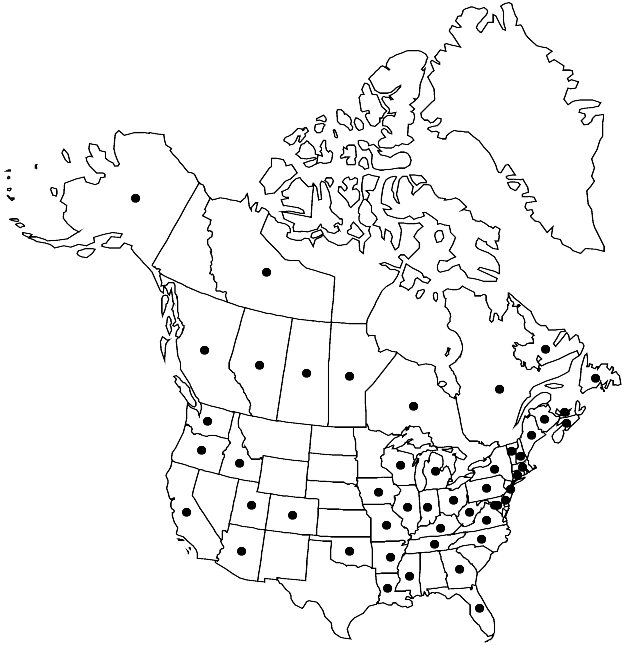Brassica napus
Sp. Pl. 2: 666. 1753.
Annuals or biennials; (taproot slender or swollen); (glaucous), glabrous, glabrescent, or pubescent, (trichomes coarse). Stems branched distally, 3–13 dm. Basal leaves (rosulate when biennial); petiole (often winged), to 15 cm; blade lyrate-pinnatifid, ± pinnately lobed, 5–25(–40) cm × 20–70(–100) mm, lobes 0–6 each side, (smaller than terminal), surfaces (glaucous), glabrous or sparsely hairy when immature, glabrescent, or, rarely, pubescent. Cauline leaves (middle and distal) sessile; blade base auriculate or amplexicaul, (margins entire). Racemes not paniculately branched, (buds overtopping or equal to open flowers). Fruiting pedicels spreading to ascending (slender), 1–3 cm. Flowers: sepals (5–)6–10 × 1.5–2.5 mm; petals golden or creamy to pale yellow, broadly obovate, 10–16 × (5–)6–9(–10) mm, claw 5–9 mm, apex rounded; filaments (5–)7–10 mm; anthers 1.5–2.5 mm. Fruits spreading to ascending, smooth or slightly torulose, terete, (3.5–)5–10(–11) cm × (2.5–)3.5–5 mm; valvular segment with 12–20(–30) seeds per locule, (3–)4–8.5(–9.5) cm, terminal segment usually seedless, rarely 1 or 2-seeded (attenuate-conic, thin), (5–)9–16 mm. Seeds dark brown to black, light brown, or reddish, 1.8–2.7(–3) mm diam.; seed coat finely reticulate-alveolate, not mucilaginous when wetted. 2n = 38.
Phenology: Flowering May–Sep.
Habitat: Roadsides, disturbed areas, waste places, cultivated and abandoned fields, escape from cultivation
Elevation: 0-500 m
Distribution

Alta., B.C., Man., N.B., Nfld. and Labr., N.W.T., N.S., Ont., P.E.I., Que., Sask., Alaska, Ariz., Ark., Calif., Colo., Conn., Del., D.C., Fla., Ga., Idaho, Ill., Ind., Iowa, Ky., La., Maine, Md., Mass., Mich., Miss., Mo., N.H., N.J., N.Y., N.C., Ohio, Okla., Oreg., Pa., Tenn., Utah, Vt., Va., Wash., W.Va., Wis., Europe, Asia, Africa, introduced also in Mexico, Central America, South America, Atlantic Islands, Australia.
Discussion
Brassica napus is both a crop and a sporadically occurring naturalized weed in North America, grown in two forms recognized by some as subspecies. Subspecies napus (rape, rapeseed, or canola) is an annual with slender roots widely cultivated as an oil crop and is the most commonly naturalized. Subspecies rapifera Metzger [= subsp. napobrassica (Linnaeus) Hanelt] (rutabaga, swede, or Swedish turnip) is a biennial with fleshy roots that rarely escapes from cultivation.
Although Brassica napus has been reported as a weed from most southeastern states, it is very likely that most reports represent misidentifications of B. rapa (I. A. Al-Shehbaz 1985). It is difficult to distinguish between plants of B. napus and B. rapa that lack flowers and proximal leaves.
Brassica napus is an allotetraploid derived from hybridization between the B. oleracea complex (n = 9) and B. rapa (n = 10). Its center of origin is uncertain but likely Mediterranean Europe, with molecular data supporting evidence of multiple independent origins between the parental taxa B. oleracea and B. rapa and its related n = 9 species (Song K. et al. 1993). Specimens from West Virginia have not been observed.
Selected References
None.